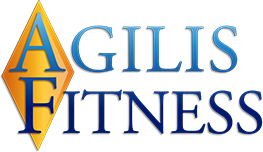The Squat, Body Weight Only
Exercise Overview:
The body weight squat is one of the most basic exercise movement patterns as it can be utilized for working out as well as a movement that we use every day. Squatting is an exercise movement that is done starting when we are toddlers, by picking up their toys off of the ground etc. We squat to sit in a chair, to stand up from sitting on the floor, picking up heavy objects and every day from sitting and standing up from the toilet seat.
Benefits:
Coordinates the musculature of the lower back and the inner core in conjunction with the muscles of the hips and legs for greater systemic stabilization.
Allows the body to re-gain symmetrical loading throughout the left and right side of the kinetic chain.
Cautions & Injury Prevention Tips:
Back issues of any kind can get worse doing squats if a Comparative Range of Motion Assessment on the legs and hips is not performed to make sure the hips are not rotating in a way that can cause the low back to compensate and further deteriorate with each set of squats.
If you have any knee pain or past knee injuries, make sure to not go into a deep (full ROM) squat.
Knees should always be in alignment with the second toe to prevent sliding of the knee from left to right during the movement
Keep your knees in line with the direction of your toes
Make sure to center the weight evenly on the surface of your foot making sure not to push all the weight forward into your toes (start with more weight on the heels than on the toes).
Make sure when you squat that your knees stay in a straight line with your ankle so that they do not protrude out over your toes.
Preparation:
Stand up straight with your hands on your hips, or arms either crossed in front of the chest or held straight out parallel to the floor.
Bring your feet out a little wider than hip width apart
Keep feet parallel to one another or turned slightly outwards to what feels comfortable
Take a deep abdominal inhale drawing the belly button in towards your spine
Movement:
While keeping your chest upright and your hands on your hips, slowly bend your knees lowering your butt toward the back as if about to take a seat in a chair
Start your exhalation through pursed lips at some point on the descent and continue to control the exhale through the ascent while keeping your core engaged with the belly button drawn in during the entire movement.
Sit back, bending at the hips and knees, to the point just before your tailbone starts to tuck under, flattening your lower back. The low back should maintain its natural curvature throughout the movement, maintaining an upright posture. Continue to progress with the knees bending as far as a 90 degree angle or thighs parallel to the floor, maintaining proper postural alignment.
While squeezing through the back of your hamstrings and your gluteal muscles, push through your heels to come back up to a standing position.
Notes:
If you are having trouble with keeping the weight of your body from going into the toes, then press your tailbone as far back as you can and shift your weight onto your heels. You should be able to wiggle your toes up and down freely at the bottom of the squat if enough weight is on your heels. Be sure not to fall backward, but that falling feeling should be there just a little at first. With practice, you should be able to keep the knees in proper alignment with the toes and feet with your body weight spread evenly between your toes and heels.
Muscles trained: (both movers and stabilizers)
Primary Muscles
Erector Spinae, Gluteus Maximus (glutes), Quadriceps femoris, Rectus femoris, Vastus intermedius, Vastus lateralis, Vastus medialis), Hamstrings (semitendinosus, semimembranosus and the biceps femoris).
Secondary Muscles (Synergists/Stabilizers)
Transverse Abdominus, Gluteus medius/minimus (Abductors), Adductors, Soleus, Gastrocnemius1
Bottom Line:
Performing a perfect and functional squat is a science, thus the term Squatology. It is extremely important to make sure your squats are done to perfection, as so many movement patterns are based on, and expand from, this movement. And, more importantly, what we do in our daily lives is affected by what we do in our workouts, so in order to roll with the chaos of life, make sure the work done in the laboratory-gym-studio-park-house is helping with your life, your sport and your physical activities.
By Isaac Chenevey & Leiana Swanson
